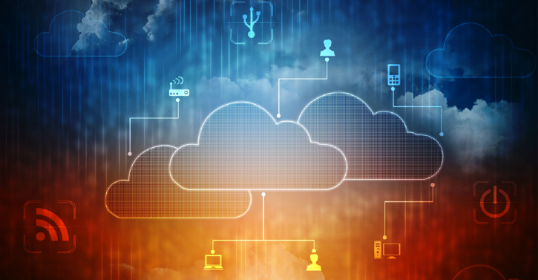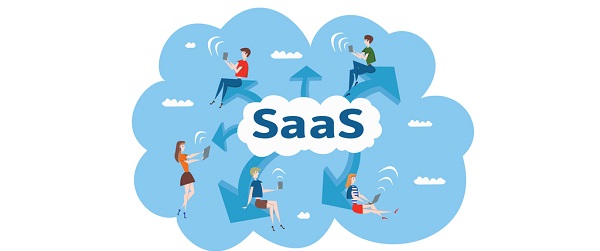Is Legacy System Holding You Back?
The Challenge
Common Misconceptions
The Reality
The Conclusion
Expert Insight
Benefits of Legacy App Migration to the Cloud
One of the most efficient ways of migrating legacy applications is moving them to the cloud. Let's look at the advantages of cloud migration over maintaining legacy applications.
 Lower Expenses
Lower Expenses
By using cloud services, businesses only pay for what they actually use and can easily upscale or downscale their resources. At the same time, cloud providers take care of maintenance and software updates, and provide a variety of services that do not come with any additional costs.
 Easier Access and Mobility
Easier Access and Mobility
Cloud-based applications offer high availability and provide support for modern user devices. This means your systems can be accessed 24/7 from anywhere and even allow multiple users to work with data at the same time.
 Increased Scalability
Increased Scalability
Not only can companies upscale and downscale their apps to increase storage capacity, but they can also add cloud services to enable new features or enhance application performance monitoring. Applications can also be integrated with SaaS apps running in the cloud.
 Improved Data Security
Improved Data Security
Cloud systems are regularly updated to comply with security standards and offer built-in security mechanisms such as permission-based rules, policies, security analytics, and enterprise visibility tools.

Application rehosting
Rehosting with us is the easiest way to cloud adoption. Using this method, we move applications to the cloud without any changes to the codebase. Essentially, we're lifting and shifting to the cloud for you. This way, the app may not access advanced cloud capabilities like autoscaling, but it still acquires general cloud hosting advantages like 99.999% reliability and global access. Many businesses choose rehosting with us as the first step in their migration process. Once they've completed the move to the cloud, it's much easier to modernize their legacy software.

Application re-platforming
During our re-platforming service, applications are optimized for cloud compatibility and enhanced performance. We make slight changes to the software architecture, enabling the use of cloud-based services like containers, DevOps automation, and modern database management. With us, businesses can also enable autoscaling to efficiently manage cloud resources. Our re-platforming option is ideal when an application is hardwired to a specific workload and there's an urgent need to improve scalability and performance. It's also the top choice for those who wish to leverage cloud capabilities but don't want to completely redesign the app's architecture.

Application refactoring
During the refactoring service, we undertake the complete remodeling of the application architecture and business logic to refine its design model, database utilization, and coding techniques. Throughout this process, the app's functionality and user experience remain intact. Our approach also involves complete optimization for the cloud, allowing you to fully harness its capabilities. Choosing our refactoring service is ideal when your business is prepared to fully transition to a cloud-native architecture. By reworking the codebase with us, it becomes cleaner, easier to update, and performs better.

Full-Stack Modernization
- Migrating from .NET Framework to .NET Core. Using Microsoft's modern, open-source, cross-platform framework, .NET Core, we enhance your application's performance, flexibility, and efficiency. If we find that your legacy application was built with the .NET Framework, our transition to .NET Core can substantially improve performance, ensure cross-platform compatibility, and align your work with modern development practices.
- Migrating from AngularJS to Angular. AngularJS, once the favored choice for front-end development in many enterprise applications, has been outpaced by the evolution of technology. With our expertise, we can guide you to the newer versions of Angular. Migrating from AngularJS to Angular introduces a range of benefits to your application. Angular, a modern and feature-rich framework, ensures better performance, scalability, and enhanced tooling. It evolves with your application's expanding needs, maintaining efficiency and responsiveness throughout.
For legacy applications, we recognize that a thorough revamp of both front-end and back-end technologies is sometimes necessary. This is especially common with enterprise applications constructed using older software frameworks. With our expertise, this transition often involves moving from .NET Framework to .NET Core for back-end operations and shifting from AngularJS to Angular for front-end development.
Migrating Legacy Applications to AWS
Migrating a legacy application to Amazon Web Services (AWS) can be a complex process. It involves rewriting application architecture for the cloud, integrating complex data, systems, and processes, addressing compliance and security concerns, managing hybrid networking setups, and investing in people and tools for a successful migration.
Our specialists suggest using AWS's cloud-native architecture and services for a cost-effective migration. Proper tools and strategies improve operational efficiency, cut IT expenses, and boost performance. Our development team uses popular AWS services and tools for easy AWS cloud migration.

AWS App2Container Service
- Initialize App2Container: Set up a workspace for collating all relevant artifacts related to the containerization project
- Scan server locations: Identify applications that are suitable candidates for containerization
- Containerize the selected applications: Use the extracted application artifacts
- Generate pipeline in App2Container: Automatically generate AWS CloudFormation templates and the Amazon ECS task definition. Register the task to run on the created ECS cluster
- Deploy pipeline in App2Container: Create an AWS CodeCommit repository for each application. Auto-upload all generated CI/CD artifacts and manifests to the repository. Additionally, App2Container creates the CI/CD pipeline (AWS CodePipeline) for the application

EC2 (Elastic Compute Cloud)
- Create an EC2 instance
- Configure instance details such as the number of instances, purchasing option, networking settings
- Add a storage volume and tag the instance for identification or categorization
- Set up a security group for the instance
- Review the instance configuration and launch it
- Connect to the EC2 instance via SSH (for Linux instances) or RDP (for Windows instances)
- Install and configure the application and any necessary dependencies

ECS (Elastic Container Service)
- Create a docker image locally on your machine or using a continuous integration service and push it to ECR (Elastic Container Registry)
- Create an ECS cluster. If you're using Fargate, these are serverless clusters, otherwise, you'll need to provision and manage the servers yourself
- Launch a service if your application is long-running, or a task if it's a batch job
- Test the service or task to ensure it's behaving as expected

API Gateway with Lambda Integrations
- Reuse parts of the previous application to implement the lambda function handlers
- Package the code in zip archives and deploy them to an S3 bucket
- Define the functions in the CloudFormation template
- Set up the API gateway, including the gateway itself, integrations, routes, a stage to deploy the API, and a set of permissions
Please note that these are high-level steps and the actual implementation may require additional detailed steps and configurations.

Modernizing a Legacy Application with MongoDB Atlas
- Move data to MongoDB's document database through a one-time data migration or ongoing real-time data synchronization
- Use AWS Services, such as AWS Database Migration Service (AWS DMS), Apache Sqoop, or Spark SQL's JDBC connector, to facilitate the migration and modernization process
- Real-time data synchronization through the tools like AWS DMS CDC, Debezium, or Qlik Replicate
- Use MongoDB Atlas Services like Atlas Search, Realm, Atlas Data Lake to optimize the app in the cloud
Get detailed guidance on migrating your application to AWS to avoid costly errors and downtime.
Frequently Asked Questions
Legacy systems, including outdated CRM software, ERP systems, EHR (Electronic Health Records) systems, LMS (Learning Management Systems), databases, and other applications, are often still in use by businesses to support critical processes, despite their obsolescence.
These applications may continue to function for years as businesses postpone necessary migrations due to perceived complexities and risks. Whether it's a CRM migration, ERP migration, EHR migration, LMS migration, or database migration. For example, these migrations might necessitate significant data transfer, and user retraining. One common concern is potential downtime. However, with proper planning and the use of modern migration tools, it's possible to eliminate them.
Migrating legacy applications is not a straightforward process and it may go astray without proper preparation and implementation. Sometimes projects fail, and here are the most common reasons:
- Poorly designed, developed, or documented legacy systems can lead to serious complications during redesign and transition.
- Lack of a proper strategy and execution plan can lead to multiple setbacks and unpredictable situations during migration.
- Ignoring the user experience and only focusing on the platform transition can make migration efforts futile.
- Migrating Legacy apps and their dependencies can cause system breakdowns when they are poorly evaluated.
- Productivity issues, such as network downtime and data access problems during migration, can cause significant business disruption.
- Legacy system upgrades can be time-consuming, potentially leading to budget overruns and causing companies to maintain their existing systems.
A good outcome comes when business minds meet with experienced technology experts to come up with a migration strategy and then follow best practices to execute it. So if you are having these issues, a good idea is to partner with the software development and cloud migration team. Technology experts can offer their in-depth knowledge, broad expertise, and strategic thinking to assist you in legacy application migration.
Recommended posts
Our Clients' Feedback








































Belitsoft has been the driving force behind several of our software development projects within the last few years. This company demonstrates high professionalism in their work approach. They have continuously proved to be ready to go the extra mile. We are very happy with Belitsoft, and in a position to strongly recommend them for software development and support as a most reliable and fully transparent partner focused on long term business relationships.
Global Head of Commercial Development L&D at Technicolor